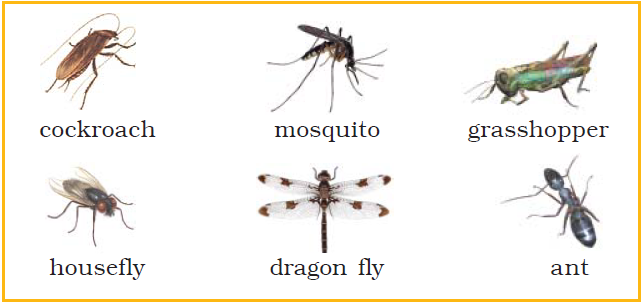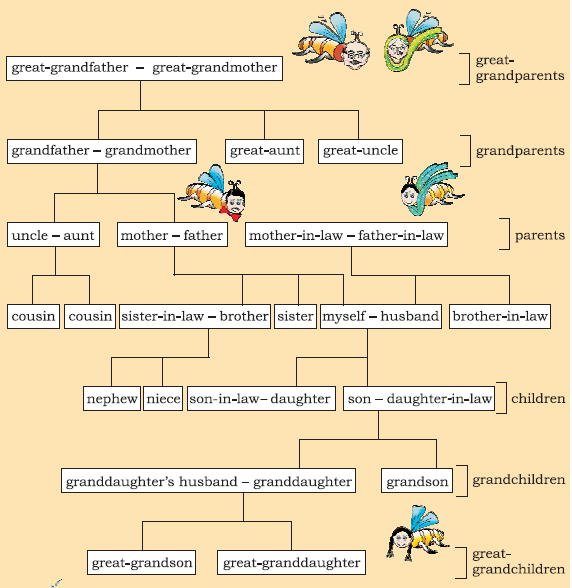NCERT Solutions Class 7 English (Honeycomb)
The NCERT Solutions in English Language for Class 7 English (Honeycomb) Chapter – 7 The Invention of Vita Wonk has been provided here to help the students in solving the questions from this exercise.
Chapter – 7 (The Invention of Vita Wonk)
Comprehension Check
Answer the following questions:
1. Choose the right answer.
(i) Mr Willy Wonka is
(a) a cook
(b) an inventor
(c) a manager.
Answer – (b) an inventor
(ii) Wonka-Vite makes people
(a) older
(b) younger
Answer – (b) younger
(iii) Mr Wonka wants to invent a new thing which will make people
(a) younger
(b) older.
Answer – (b) older
2. Can anyone’s age be a minus number? What does “minus 87” mean?
Answer – No, anyone’s age cannot be a minus number. It is calculated from the day we are born. Minus 87 means that the person will have to wait for 87 years to take birth.
3. Mr Wonka begins by asking himself two questions. What are they?
(i) What is _____________________?
(ii) What lives _____________________?
Answer – Mr Wonka begins by asking himself two questions. They are:
(i) What is the oldest living thing in the world?
(ii) What lives longer than anything else?
Working with the text
Answer the following questions.
1. (i) What trees does Mr Wonka mention? Which tree does he say lives the longest?
(ii) How long does this tree live? Where can you find it?
Answer –
(i) The trees that Mr Wonka mentioned are the Douglas fir, the oak, and the cedar. He said that a tree called Bristlecone pine lives the longest.
(ii) This tree lives for over 4000 years. It can be found upon the slopes of Wheeler Peak in Nevada, U.S.A.
2. How many of the oldest living things can you remember from Mr Wonka’s list? (Don’t look back at the story!) Do you think all these things really exist, or are some of them purely imaginary?
Answer – With the exception of the 4000-year-old Bristlecone pine, the things mentioned in Mr Wonka’s list (e.g., the toe-nail clipping from a 168-year-old Russian farmer, the tail of a 51-year-old horse) are purely imaginary.
3. Why does Mr Wonka collect items from the oldest things? Do you think this is the right way to begin his invention?
Answer – Mr Wonka collected items from the oldest things because he wanted to invent a something that would make people older. It was probably the right way to begin his invention as he wanted to make people older and therefore, the use of old things seems appropriate.
4. What happens to the volunteer who swallows four drops of the new invention? What is the name of the invention?
Answer – The volunteer began to wrinkle and shrivel up all over. His hair started to drop off and his teeth started to fall out. He suddenly became a seventy-five year-old man! The name of the invention was Vita-Wonk.
Working with language
1. What do you call these insects in your language?

Add to this list the names of some insects common in your area.
Answer – The cockroach is also a “काकरोच” in our language, the mosquito is named as “मच्छर”, the grasshopper is known as “टिड़डा”, housefly as “मक्खी”, dragonfly as “माक्खा”, and the ant is known as “चींटी” in Hindi.
Insects cause various diseases by affecting health. They are the carrier of microorganisms. Mosquitoes cause malaria, dengue. Houseflies spread unhealthy particles.
2. Fill in the blanks in the recipe given below with words from the box.
| shred, cooker, times, tomatoes, half, onion, oil |
Easy Palak–Dal
INGREDIENTS
• One ________
• One cup dal
• Two thin green chillies
• ________ a teaspoon red chilli powder
• Eight small bunches of palak
• Two ________
• Salt to taste
Wash and cut the vegetables; ________ the palak. Put everything in a pressure ________. Let the cooker whistle three ________, then switch it off. Fry a few cumin seeds in ________ and add to the palak–dal.
Answer –
• One onion
• One cup dal
• Two thin green chillies
• Half a teaspoon red chilli powder
• Eight small bunches of palak
• Two tomatoes
• Salt to taste
Wash and cut the vegetables; shred the palak. Put everything in a pressure cooker. Let the cooker whistle three times, then switch it off. Fry a few cumin seeds in oil and add to the palak–dal.
3. A ‘family tree’ is a diagram that shows the relationship between the different members of a family. Fill in the family tree below with names, ages, and other details you think are relevant (you may even stick photographs, if you have them). Put your family trees up in the class.

Answer – Do it yourself.

Leave a Reply